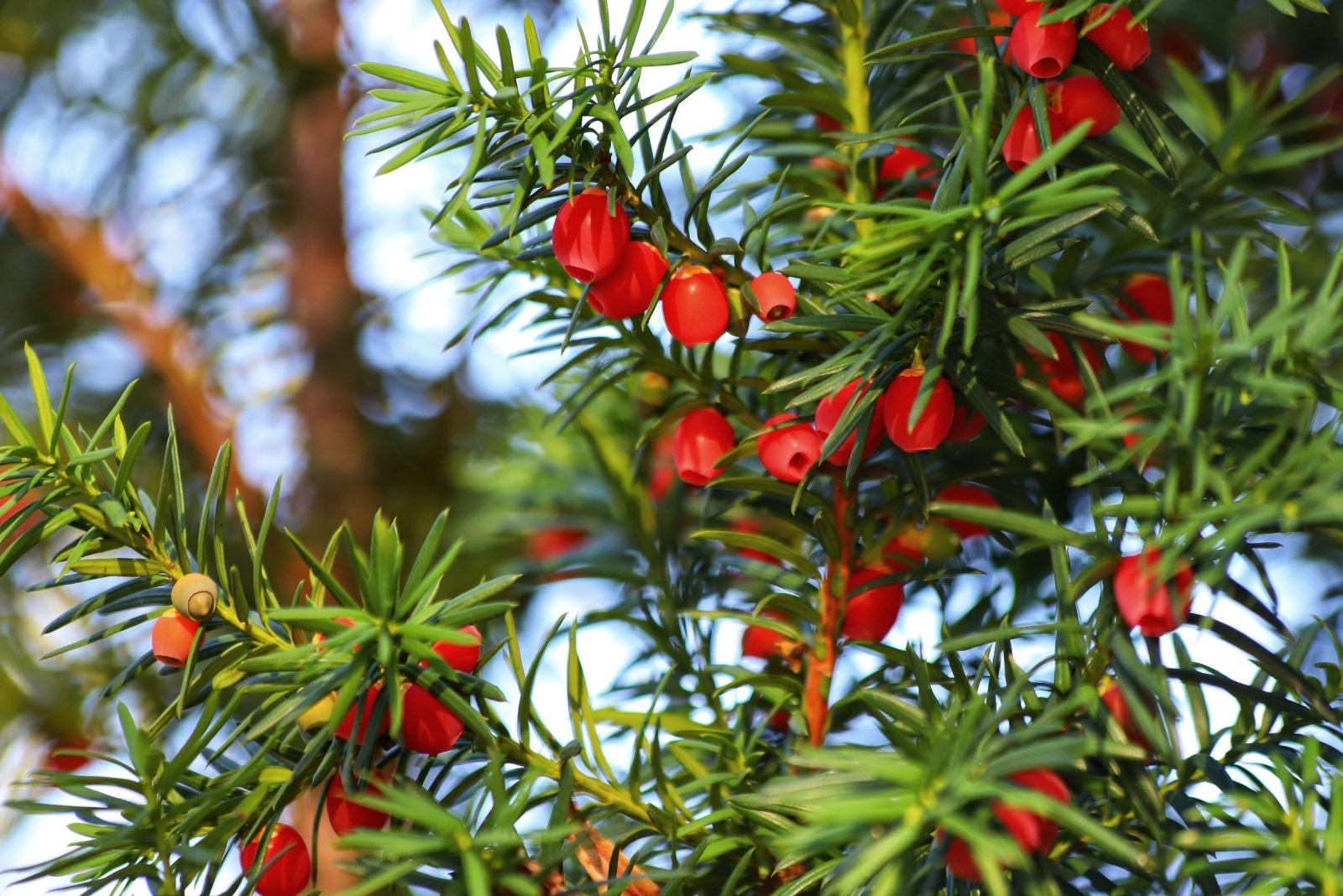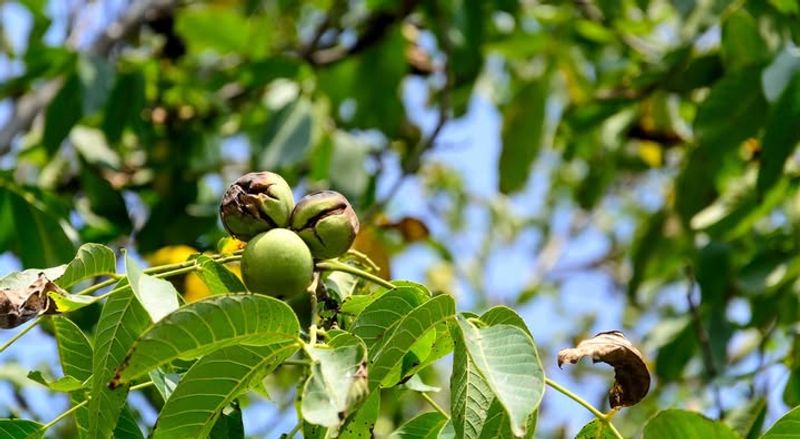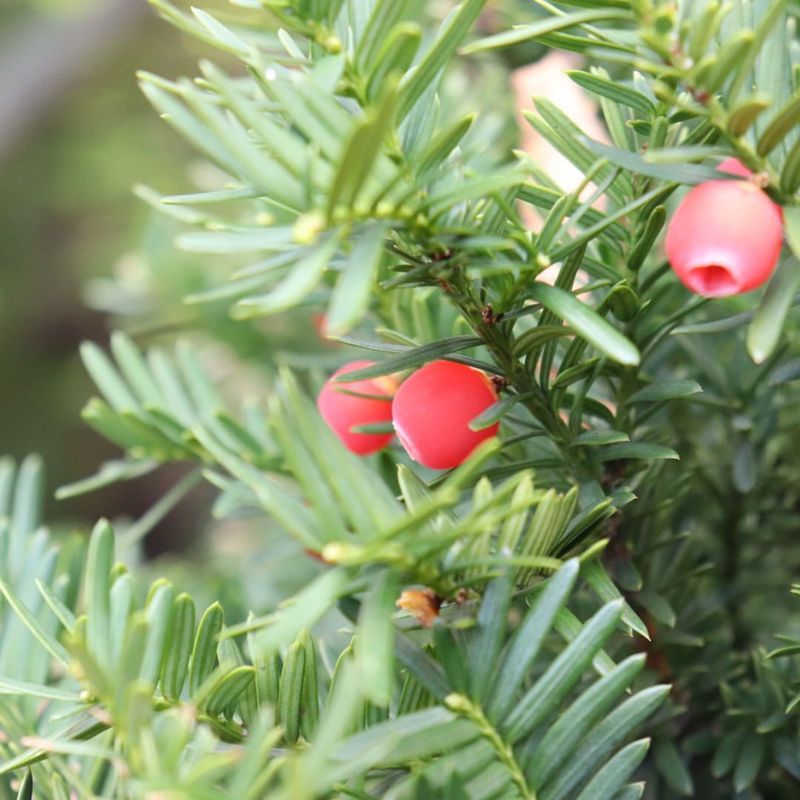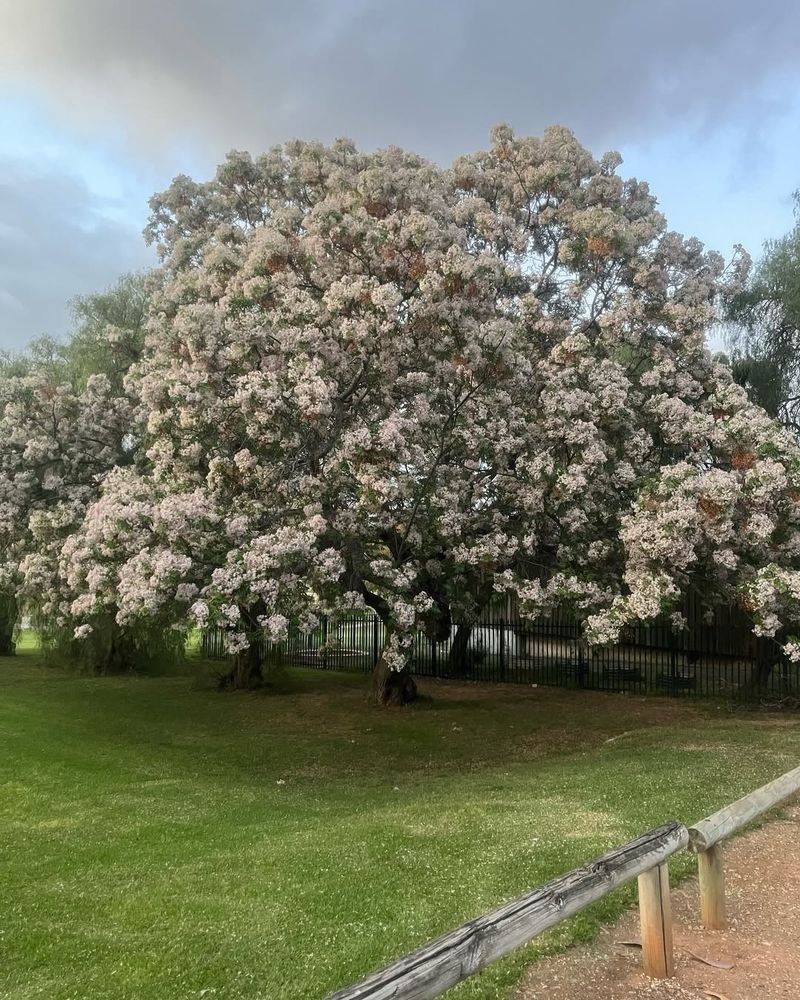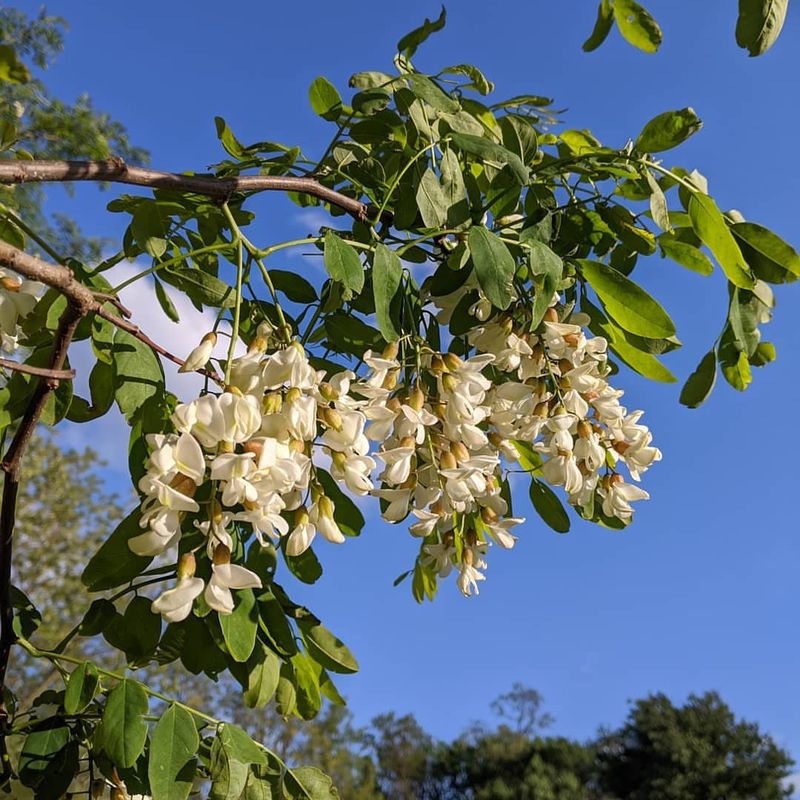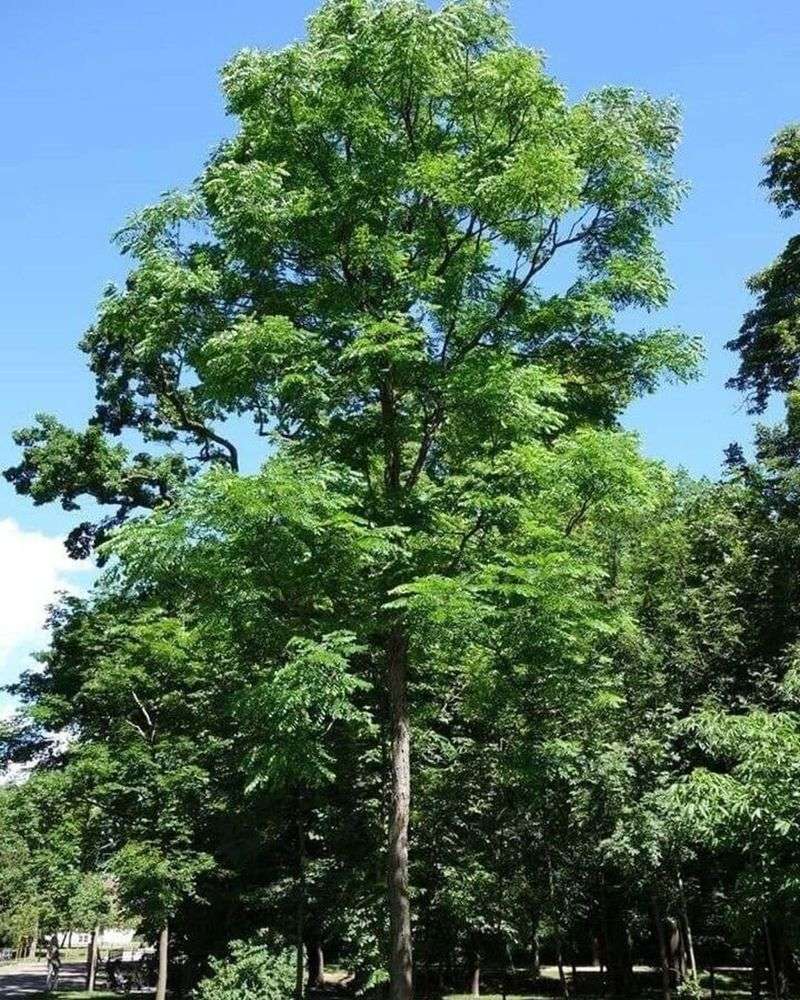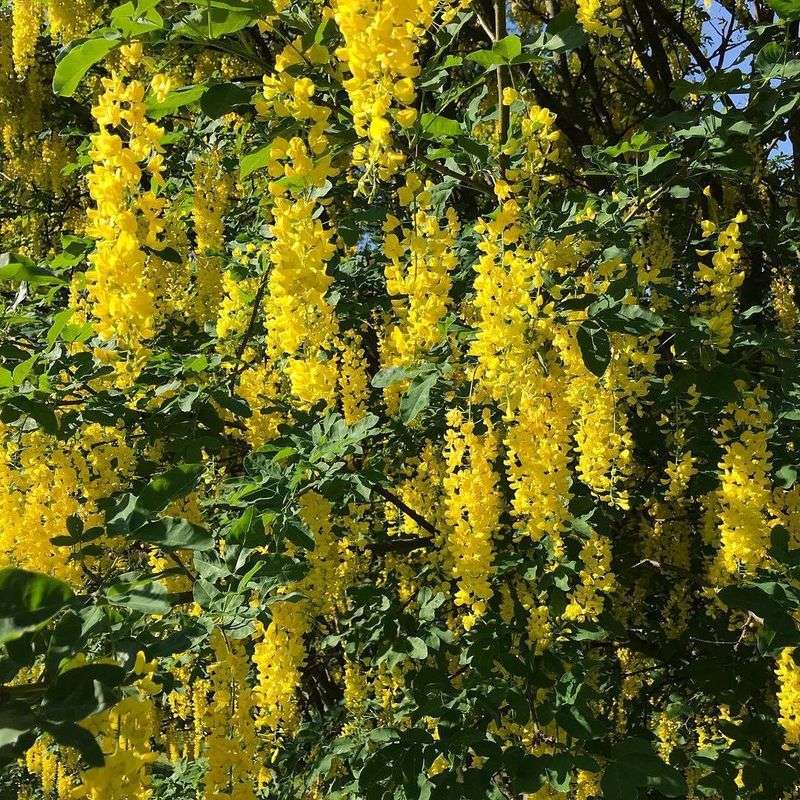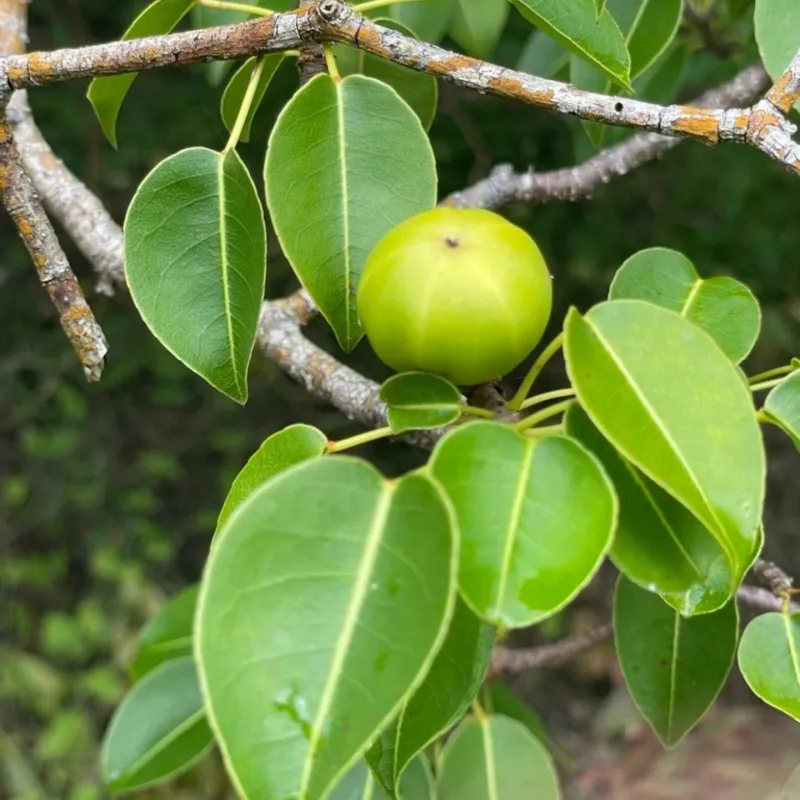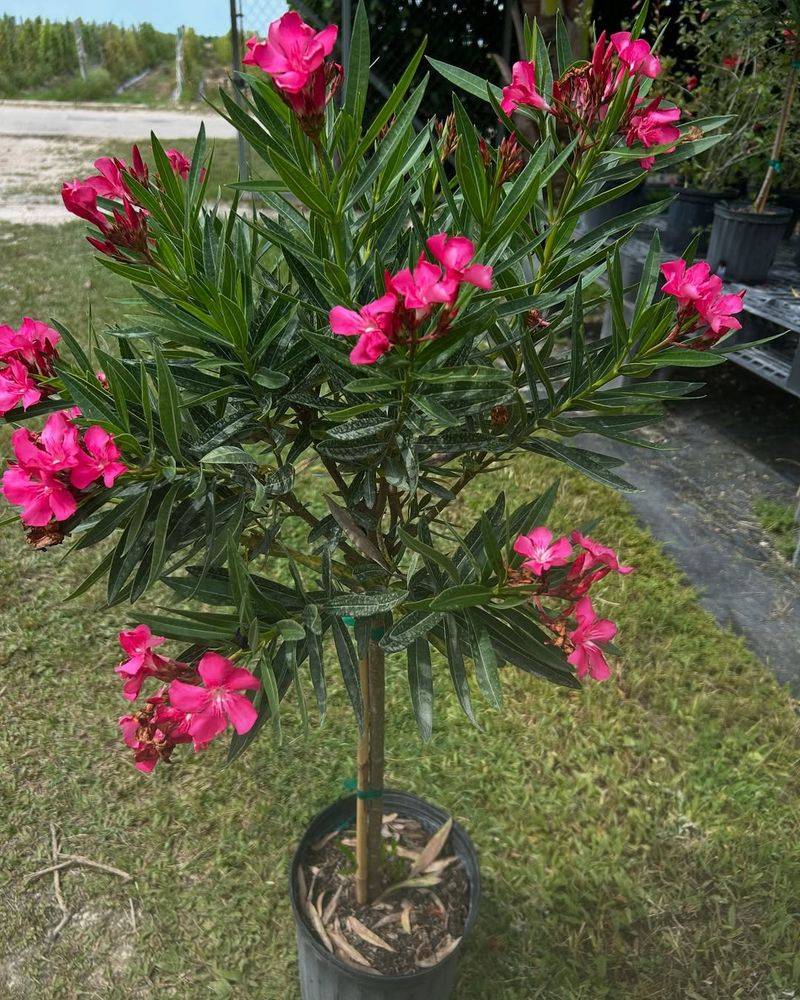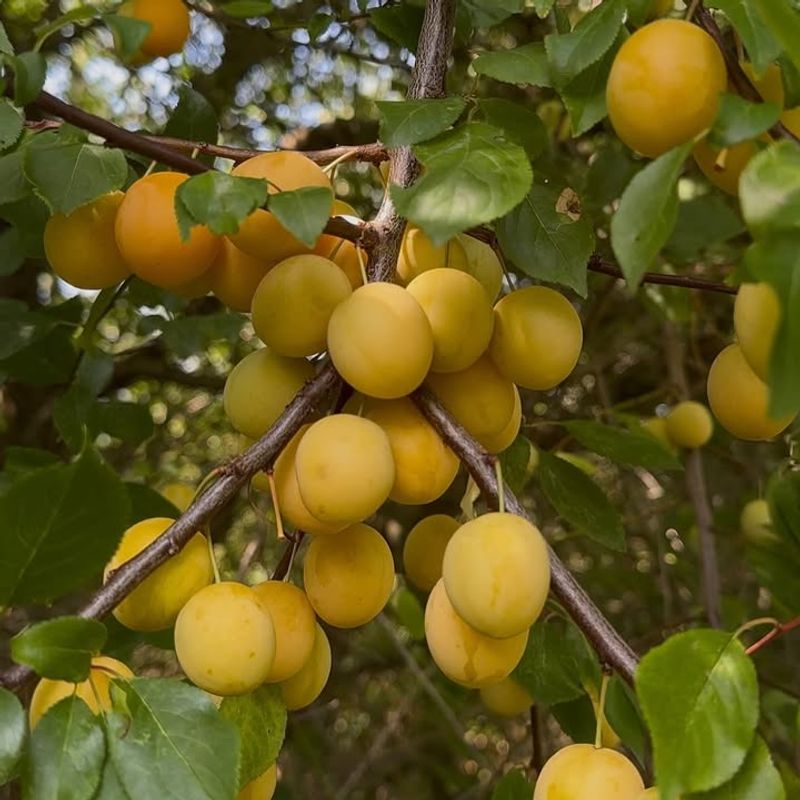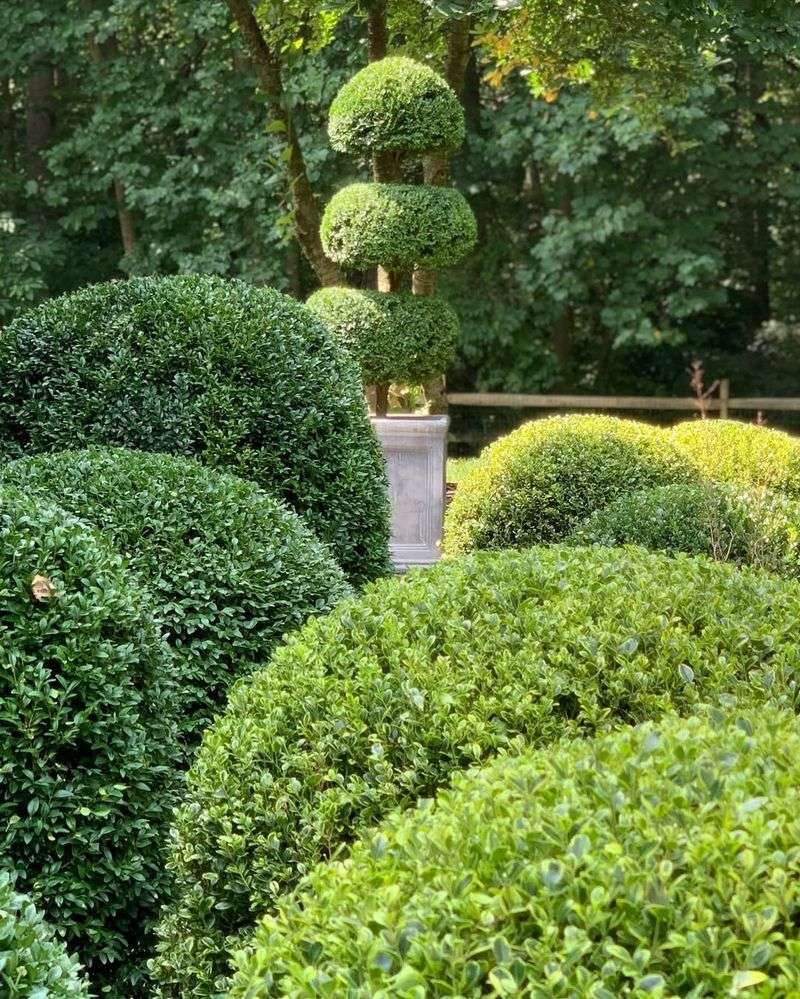Wisconsin has some trees that look innocent at first glance, but they bring more trouble than beauty once they settle into a yard. I’ve seen a few of these cause nonstop headaches for neighbors, and it’s wild how fast they take over.
Some can harm pets, wreck soil, or spread in ways you definitely don’t want near your garden. Here’s a look at the ones you’re better off avoiding entirely.
1. Black Walnut
Black walnut trees produce a chemical called juglone that harms many plants growing nearby. Wisconsin gardeners often struggle when tomatoes, peppers, and azaleas wilt mysteriously near these towering giants.
The roots, leaves, and hulls all release this substance into the soil. Even fallen nuts can cause problems for curious pets who chew on them.
Many horses have suffered severe laminitis after exposure to black walnut shavings in their bedding. Consider planting this species far from gardens and animal areas if you must have one at all.
2. English Yew
English yew shares the same dangerous characteristics as its American cousin but grows more slowly in Wisconsin climates. Landscapers have used this species for centuries in formal hedges and topiaries.
The needles remain toxic year-round, posing constant threats to grazing animals. Even dried clippings in compost piles retain their poisonous properties for months.
Homeowners trimming these evergreens should dispose of cuttings carefully, keeping them away from livestock areas. If you inherited an English yew with your property, consider replacing it with safer native alternatives that support local wildlife better.
3. Chinaberry
Chinaberry trees produce marble-sized yellow fruits that remain on branches well into winter across Wisconsin. Birds sometimes eat these berries and spread seeds to new locations.
The fruits contain tetranortriterpenes that affect the nervous system when consumed. Children have been hospitalized after eating just a handful of these attractive but dangerous berries.
All parts of the tree carry toxins, including the bark and leaves. Though chinaberries struggle in Wisconsin’s cold winters, some specimens survive in protected urban microclimates where they shouldn’t be planted at all.
4. Black Locust
Black locust trees offer beautiful fragrant flowers in spring but hide toxins in their bark, leaves, and seeds. Wisconsin farmers have long known that livestock grazing near these trees can become seriously ill.
The inner bark contains robin and robitin, compounds that cause digestive distress. Children making whistles or chewing on twigs face similar risks from these substances.
Even the seeds inside flat brown pods carry enough toxins to cause problems. While black locust wood makes excellent fence posts, living trees near homes with children or pets create unnecessary hazards in your landscape.
5. Kentucky Coffee Tree
Kentucky coffee trees grow wild in southern Wisconsin forests and feature enormous compound leaves. The large brown pods contain seeds that pioneers once roasted as a coffee substitute after careful preparation.
Raw seeds and pods contain cytisine, a substance that causes serious neurological symptoms. Livestock have experienced tremors and breathing difficulties after consuming fallen pods in pastures.
The pulp surrounding the seeds also carries toxins that affect animals differently than humans. While mature trees offer interesting winter silhouettes, the hazards they present to curious pets and grazing animals make them poor choices for residential properties.
6. Golden Chain Tree
Golden chain trees display stunning waterfalls of yellow flowers that make them popular ornamental choices. Every part of this European import contains cytisine, the same alkaloid found in several other poisonous plants.
Wisconsin gardeners admire the dramatic blooms but should understand the serious risks. The seed pods that follow flowering look like pea pods and attract children’s attention.
Just a few seeds can cause vomiting, confusion, and convulsions in small children. Pets who chew on fallen branches or flowers face similar dangers throughout the growing season when toxins concentrate in plant tissues.
7. Manchineel
Manchineel trees don’t grow naturally in Wisconsin’s climate but occasionally appear in botanical collections. Called the most dangerous tree in the world, every part contains powerful toxins.
Even standing under one during rain can cause skin blistering from sap washing off leaves. The small apple-like fruits have hospitalized people who took just one bite.
Smoke from burning manchineel wood causes respiratory damage and eye injuries. While you won’t encounter these trees in typical Wisconsin neighborhoods, greenhouse collections and tropical conservatories should keep them far from public access areas with clear warning signs posted.
8. Oleander
Oleanders typically grow as shrubs in warmer climates but Wisconsin residents sometimes keep them in containers. All parts contain cardiac glycosides that affect heart function dangerously.
Even using oleander branches as skewers for roasting food has caused poisoning incidents. A single leaf contains enough toxins to cause serious harm to children or pets.
The beautiful flowers come in pink, white, and red varieties that attract attention. Despite their ornamental appeal, oleanders belong nowhere near homes with curious kids or animals who might chew on the attractive foliage during Wisconsin’s brief warm seasons.
9. Cherry and Plum Species
Wild cherry and plum trees grow throughout Wisconsin landscapes and produce beautiful spring blossoms. The leaves and seeds contain cyanogenic glycosides that release cyanide when chewed or damaged.
Wilted leaves become especially dangerous after storms knock down branches. Livestock have suffered poisoning after eating fallen limbs from these common trees.
The fruits themselves are safe when fully ripe, but pits and leaves pose real hazards. Homeowners with horses or goats should remove wild cherries and plums from fence lines where animals can reach the foliage during Wisconsin’s unpredictable weather patterns.
10. Boxwood
Boxwood shrubs appear in countless Wisconsin landscapes as foundation plantings and formal hedges. These evergreens contain alkaloids throughout their stems and leaves that cause digestive upset.
Pets who chew on boxwood branches may experience vomiting and diarrhea. The toxins affect animals more severely than humans in most cases.
Landscapers trimming boxwoods rarely face problems unless they inhale dust from extensive cutting. While less dangerous than some species on this list, boxwoods still pose enough risk that families with puppies or curious cats should consider alternatives like native ninebark or spirea instead.
11. Castor Bean
Castor bean plants grow as annuals in Wisconsin gardens, reaching impressive heights by late summer. The seeds contain ricin, one of nature’s most potent toxins known to science.
Just one or two beans can cause life-threatening symptoms in children. The attractive mottled seeds look like decorative beans that kids might collect.
Even though commercial castor oil comes from these plants, processing removes the dangerous ricin. Gardeners attracted to the plant’s tropical appearance and burgundy foliage should choose safer alternatives like cannas or elephant ears that provide similar dramatic effects without deadly consequences.
12. Red Maple
Red maples are beloved for their brilliant fall color across Wisconsin landscapes. While safe for humans, the wilted or dried leaves pose specific dangers to horses and other equines.
Oxidative damage to red blood cells occurs when horses consume even small amounts of these leaves. Fresh green leaves and fully dried leaves cause fewer problems than partially wilted foliage.
After autumn storms, Wisconsin horse owners must remove fallen red maple branches from pastures immediately. If you keep horses on your property, plant sugar maples or oaks instead of red maples to avoid this seasonal hazard that affects equines uniquely.

